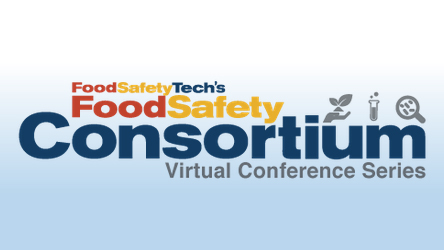For food manufacturers, passing a third-party food safety and quality audit supports both business growth and the ability to obtain new customers. Many retailers have made certification to a GFSI-benchmarked standard a minimum requirement of their suppliers. Working towards compliance with a third-party audit, let alone a GFSI-benchmarked certification, is a journey that requires significant preparation. Understanding the typical mistakes companies make on this journey, and taking action to avoid them can go a long way in properly preparing for and successfully passing the audit. Here are five essential tips to help businesses prepare for a food safety audit.
1. Start Early
Procrastination is on one of the most common causes of an audit failure. Starting the preparation process too late can cause significant challenges. The first step in preparing for an audit should be to set a timeline well in advance, identifying key checkpoints and milestones to ensure activities meet compliance.
If you have the option, choose an audit standard that fits with the facility and meets the end goal. Some questions to ask in your selection process include:
- Is the certification to a GFSI-benchmarked standard required?
- Is a completed third-party food safety and quality audit sufficient?
- Is a customer-specific audit needed?
Once you’ve decided on the audit standard, select a third-party certification body or audit firm to deliver an audit to the standard’s requirements. Ensuring that the certification body or audit firm you choose is qualified to conduct the audit (e.g., accredited or approved by the standard) is crucial.
Next, secure a copy of the selected standard. With GFSI-aligned programs (including GFSI and non-GFSI benchmarked standards), standard expectations are available freely and directly from the certification program owners. In the case of proprietary third-party audit and customer standards, the chosen certification body or audit firm can assist with providing the necessary expectations.
2. Get Up to Speed
It is extremely important to thoroughly review and familiarize yourself with the standard or expectations manual, especially if the standard or manual is new to the facility. If the audit is a reassessment, ensure you have the most recent version of the standard or manual and thoroughly read it, as updates may have been made since the last audit.
Subscribe to the Food Safety Tech weekly newsletter to stay up-to-date on the latest food safety and regulatory news.
One mistake we sometimes see is failing to designate an internal core team for the audit. Doing so can help ensure the timeline is followed and critical tasks are assigned accordingly. If you are doing a reassessment, ensure that all internal organizational changes have been documented and that organization charts and rosters have been updated.
For reassessments, it’s also important to revisit any nonconformances from previous audits and the reports of any other assessments or internal audits completed. Doing so ahead of time can confirm that corrective actions have been fully implemented and preventive actions put in place, minimizing the recurrence of nonconformances.
3.Complete a Self-Assessment
Conduct an internal audit using the audit standard or expectations manual to identify compliance gaps. Address any deficiencies through corrective actions, focusing on areas such as sanitation and cleanliness, facility condition, pest management programs and maintenance protocols. Looking at each of these areas, identify and address opportunities for improvement. Issues in these areas are very often cited as nonconformances during audits.
Before the audit, meet with your third-party service providers to ensure programs are up to date and that there is awareness of any issues. Even when programs, such as pest control, are outsourced to third-party organizations, the facility remains responsible for overseeing such programs.
4. Prepare Documentation and Ensure Implementation
Documentation is critical for audit success. Ensure a comprehensive review of your food safety systems (e.g., HACCP and FSMA PC) to ensure that they are current and valid. Review the efficiency of your process implementation and verify that the documentation and processes are aligned.
Training is a must-have for audit compliance; therefore, confirm that internal training has occurred and been documented. This includes training not just for the team escorting the auditor during the audit but for all employees, as during the visit employees in functions key to the audit’s scope may be called on by the auditor to answer questions. Remember, well-trained employees are confident in conducting and describing their processes and how they connect to food safety and quality. They must also follow the procedures as stated in the documented programs and policies.
5. Collaborate and Ask for Help
Failures occur when assumptions are made. Many audits are unsuccessful because facility management and employees assume they understand and have implemented the necessary requirements.
When in doubt, ask for help. As stated above, preparing for any audit is a significant undertaking. Expert resources can help with that preparation and assist with avoiding gaps and the rework that occurs when expectations are not clearly understood. Check with the certification body or audit firm that has scheduled the audit—many will offer separate consulting and training services to help with audit preparation.
It is important to note that one facility is just one point in the overall supply chain and that stakeholders include both suppliers and customers of the facility. These suppliers and customers can play a role in the success of an audit. Ensure that communication with all involved parties is part of the preparation.
Keep the Momentum Going
Once you complete an audit, celebrate and congratulate the team. At the same time, remember that the work doesn’t end once the audit is complete. Even after completing the corrective actions, you should start preparing for the next audit by keeping documents and records updated. Adequate food safety and quality assurance are only possible when activities connected to these concepts are carried out every day. Keeping compliance top-of-mind daily has the additional significant benefit of always being audit-ready.
As the adage says, “Fail to plan, plan to fail.” This certainly rings true with audit readiness. However, it is key to remember that an audit is merely a data point on the spectrum of a robust food safety and quality system that is constantly evolving and improving. This comprehensive system does not come about just because there is an audit to plan for. It is a product of daily work to ensure that procedures and policies are being followed and a cross-functional team that is striving to make a facility’s food safety culture stronger and ever more capable of preventing food safety and quality incidents.

















